Lemongrass aquarium plant: selection, cultivation and breeding
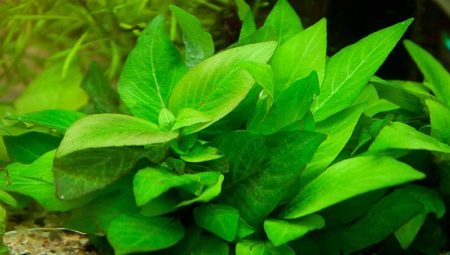
The aquarium plant lemongrass has been a popular inhabitant of the aquarium for quite a long time. With the help of this plant, each fish owner is able to easily create their own ecosystem. The aquarium lemongrass is quite unpretentious in its content, it is distinguished by its rapid growth and special beauty. You will learn about all the other features of the plant and much more from our article.
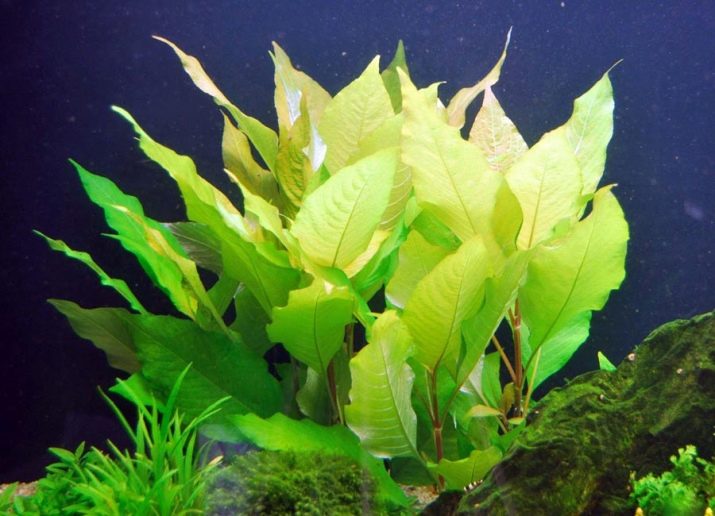
Peculiarities
Lemongrass is one of the types of aquarium plants - got its unusual name due to the special smell it emits. The aroma itself is weak and vaguely reminiscent of lemon. But it is also worth noting that there is another name for this plant - Indian swamp or Nomaphila stricta. It is originally from Asia, more precisely, from its southeastern part.
One of the main functions of the plant, in addition to the aesthetic, is to oxygenate the aquarium space. In addition, the plant's large leaves can be excellent hiding places for fish. It is also worth noting that this vegetation can grow both in water and on land, provided that moisture is optimal for growth.

Moreover, the growth rate in air can be several times faster.
This plant is capable of pleasing the eye for a long time, since under good conditions aquarium lemongrass can grow for 365 days a year by about 10 centimeters in one week. We draw your attention to the fact that if the growth of the plant is not controlled, then it can grow greatly. and take up more space in the aquarium than it should.
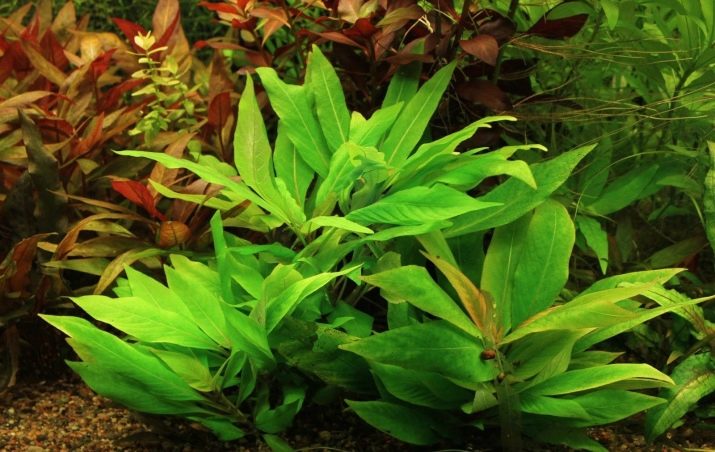
Appearance
If you want to acquire such an aquarium plant as lemongrass, then you should familiarize yourself with its main external characteristics.
The standard height of most varieties of this plant is about 30 centimeters. Moreover, the stem itself is quite thick and of a darker shade compared to the foliage. Leaves vary depending on the species. The most common are oval and pointed leaves. Their length can reach up to 12 centimeters, and their width is about 4 centimeters. The outer side of the leaves is usually light green in color, and the back is silvery.
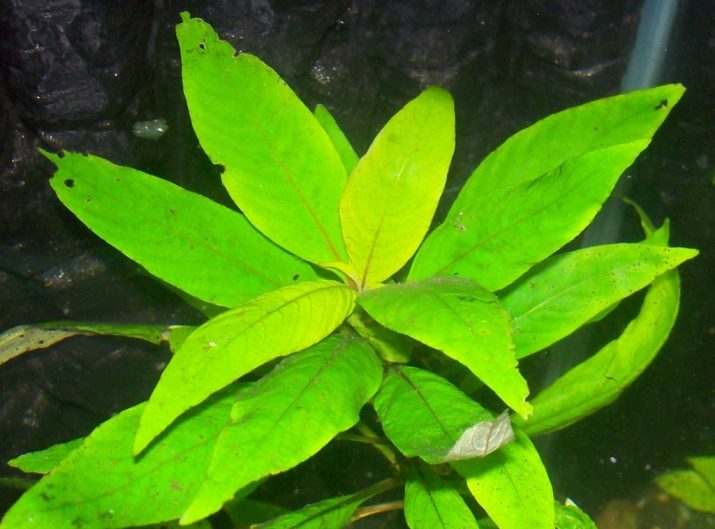
This is a description of the external characteristics of a plant that grows in water. As for the species that grows on land, its appearance is slightly different: the foliage is more embossed, and also has pronounced veins along its entire length; during the flowering period, a small-sized blue flower appears.
It is by these characteristics that you can determine that your "pet" is not susceptible to any diseases and feels comfortable in its environment. If there are any changes in the shape of the stem, foliage, or their color does not correspond to the above characteristics, then action must be taken. Most often, problems can be in the following aspects:
- water;
- the soil;
- lighting;
- temperature;
- compatibility with other plants and fish.

If all these factors are taken into account, then your aquarium lemongrass will be able to fully grow and delight you for a long time.
Views
A large number of varieties of aquarium lemongrass are known, but only a few are used to decorate a home aquarium. These include several varieties of the plant.
- Narrow-leaved. The main distinguishing feature of this plant is the highest growth rate in comparison with other species. Note that in a fairly soft aquatic environment, this species can shed foliage, and the stem will be bare on several upper tiers. And also the plant loves a lot of light, replacing a small amount of water in the aquarium (1-2 times a week).
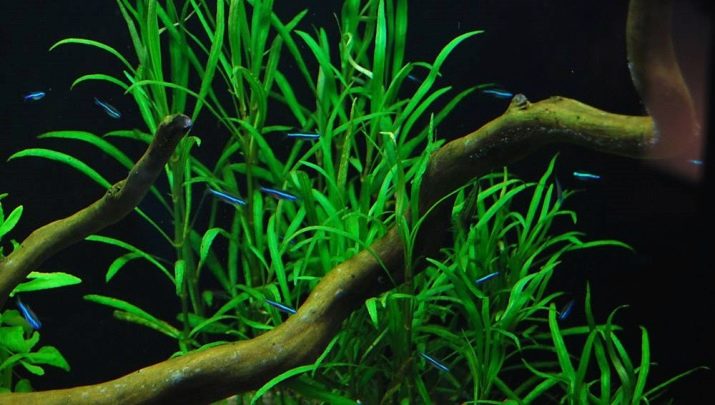
- Dwarf. This type of aquarium lemongrass is distinguished by its rather short epicotylae and very dense foliage, which is located close to each other. It is also worth noting that this type of aquarium plant is starting to gain popularity among aquarium enthusiasts.
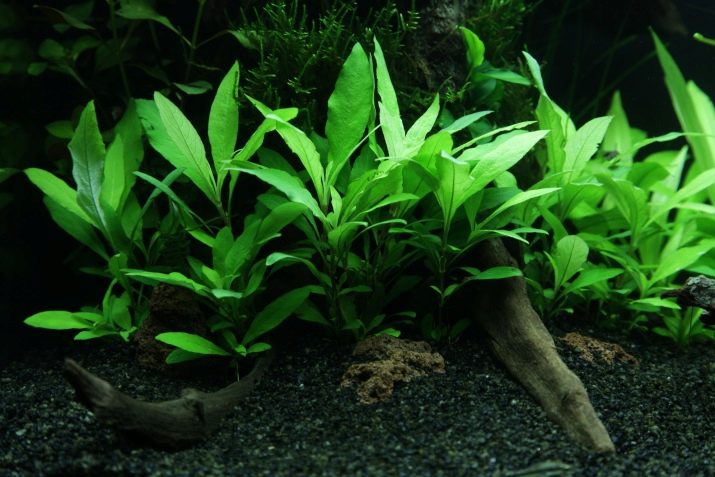
- Willow. It is considered one of the most unusual species, as the same species can look completely different depending on the location. Features include a thin and flexible stem, as well as narrow and very thin leaves that are able to wriggle along with the flow. The plant loves bright light and does not tolerate liquid forms of fertilizer. In addition, this variety can serve as an indicator of the aquatic environment, one has only to pay attention to the change in the foliage of the plant: white bloom - lack of iron; yellowing or rapid dieback - lack of nitrates; holes in foliage - lack of calcium.

How to choose?
In order to create a beautiful and comfortable aquarium for your fish, some part of its perimeter should be occupied by algae. They will help create a beautiful look. Unlike artificial vegetation, live aquarium plants will benefit your pets.
Care should be taken when choosing aquarium algae. And lemongrass is no exception. For starters, it is worth noting that aquarium algae can be divided into 3 categories according to their location: in the back, in the middle and in front of the aquarium.

Lemongrass can usually be found either in the middle or in the background of an aquarium (depending on the species).
To choose a good "seedling" for your aquarium, you should pay attention to several external signs. These include several factors.
- The stem should be darker than the foliage. And also it should not be too thin.
- The leaves should look healthy, without any blotches or blotches. Their color is usually slightly lighter than the stem. Depending on the type of plant, the back of the leaves may differ from the front in color, this may not always be a bad sign.
- The roots should be at least 2-3 centimeters long for the plant to take root well in the aquarium soil. Make sure that the roots are undamaged.

How to plant?
Even if you chose the best specimen for your aquarium, but planted it in an inappropriate way, the plant will not take root and will soon die. That is why it is necessary to take a responsible approach not only to the process of choosing aquarium greenery, but also to its planting.
In order to plant lemongrass correctly, you must comply with some requirements in relation to the aquarium soil:
- the thickness of the soil layer should be in the range from 5 to 7 centimeters;
- any soil base is suitable, since the roots of this plant are very strong and can take root in any soil;
- when transplanting under the root of lemongrass, you need to place a small layer of clay;
- in the soil there must be a concentration of nutrients, silt.
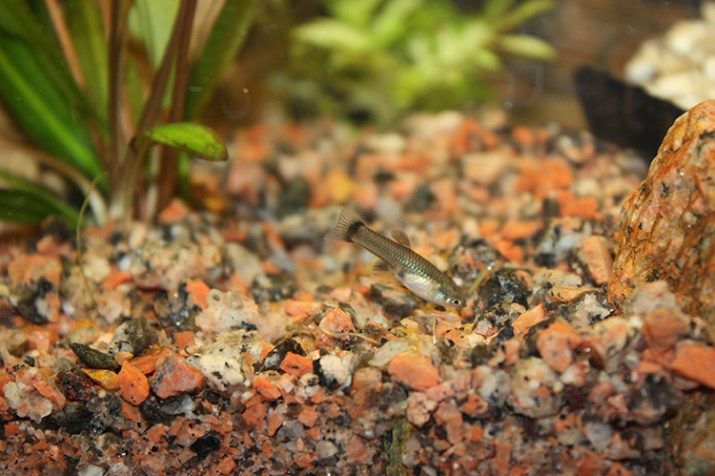
If the soil is favorable for the plant, then this is already an application for complete success. However, do not forget about other factors that can contribute to the speedy growth of your lemongrass. The rest of the features that you should pay attention to when planting include the following factors:
- lemongrass is sensitive to changes in the environment, therefore, after planting, do not use an abundant amount of fertilizer;
- abundant light will help the plant to take root faster and promote the rapid growth of leaves;
- lemongrass is difficult to tolerate large amounts of sodium ions in water.
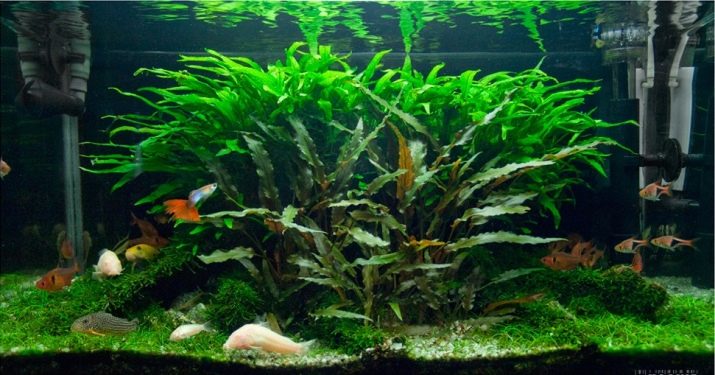
In order to grow this type of plant in this kind of environment, you must first place it in a small container with a small amount of water. As soon as you notice shoots, you can transplant it into the ground.
In this case, do not forget about a thin layer of clay, which must be placed in the ground.
Content rules
Schisandra is a rather attractive and at the same time not very whimsical plant to care for, which can grow in an aquarium in your home. This type of plant is intended for growing in large aquariums (from 150 liters). In order for your plant to maintain its original attractive appearance, it is necessary to take proper care of it. Everyone knows that aquarium lemongrass is prone to very rapid growth, and if you do not want it to take up most of your aquarium, you need to keep track of its size and trim the stem in time, shorten the shoots.

And there are also a number of conditions that will help your "green pet" feel comfortable in its environment.
- The soil. It is imperative that there is a clay-peat layer with a width of 5 centimeters or more. Lemongrass will feel comfortable in a silty substrate with fertilizers, which include phosphorus, calcium, magnesium.
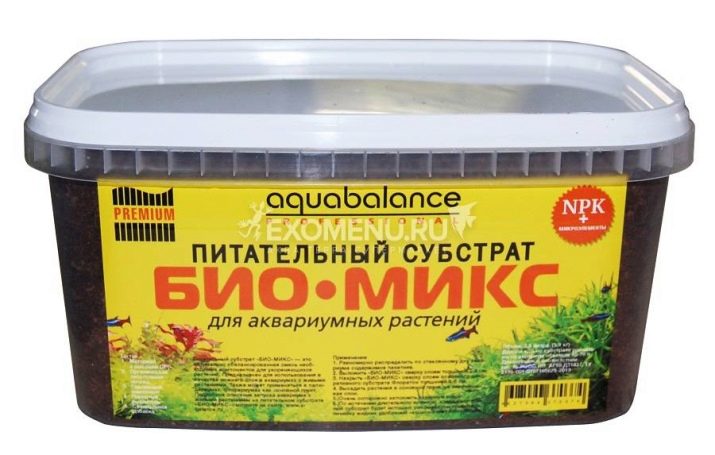
- Lighting. It is recommended to grow this type of aquarium plant with 50 lm of luminous flux per liter of water. It is best to use LED bulbs. It is also possible to use fluorescent lamps, but they should be replaced more often than LED lamps. The shade of the light itself must be yellow, otherwise the "pet" will grow too quickly.
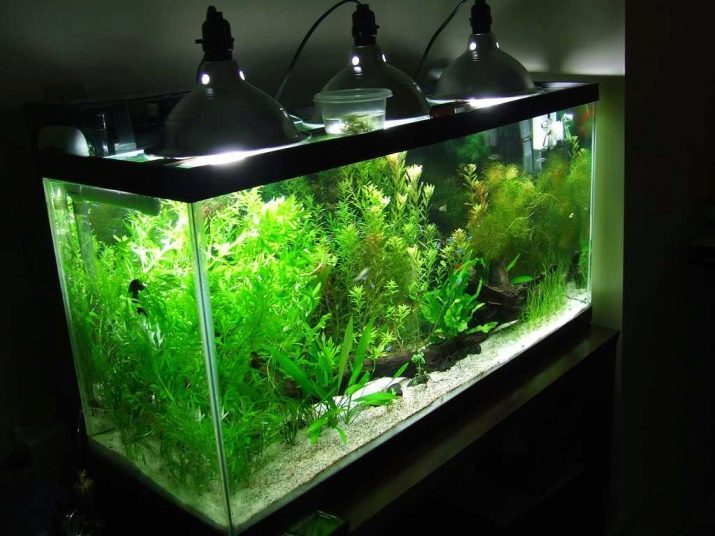
Experts recommend providing illumination of the side parts of the aquarium, and the lighting itself should work no more than 12 hours.
- Temperature. The optimum temperature for aquarium magnolia vine is + 24.28 ° С. If the reading on the thermometer drops below + 20 ° С, then the algae will grow slowly, and foliage may fall off.
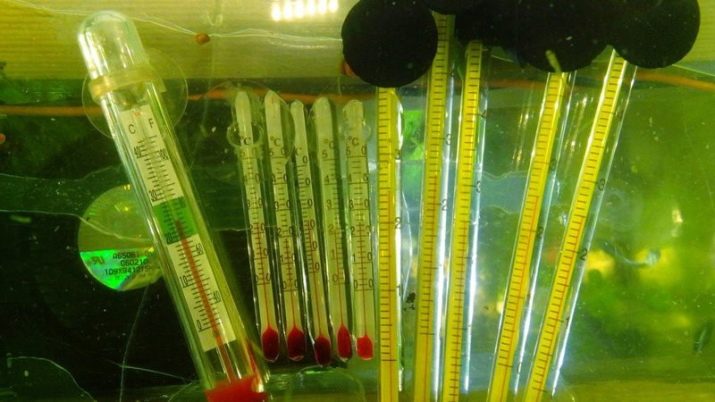
- Water. The aquarium water hardness should be between 8 dGh and 7-8.5 pH. In this case, the indicator of nitrates should not exceed 10 milligrams per liter of water. And also every 7 days it is necessary to replace approximately 30% of the water. The new amount of water must meet all of the above parameters. In addition, the movement of water in the aquarium should be moderate, so pay attention to the filter you are installing. If its power creates a strong flow, then resort to using a "flute".

- Compatibility. Lemongrass is considered a fairly resilient alga that can crowd out some other flora. At the same time, do not forget that other plants, for example, pistia, can affect the growth rate of your lemongrass upward. As for fish, it is best not to settle lemongrass in the same aquarium with nomaphiles, scalars, and ancistrus.
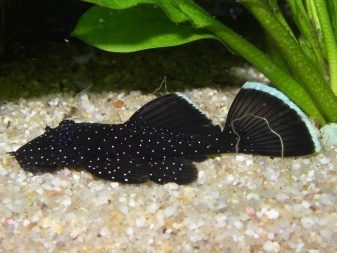
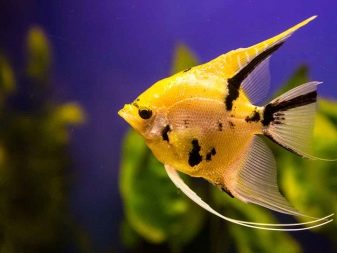
How to reproduce?
As for the breeding of this type of plant, it is produced using cuttings. In order for all the processes to be carried out correctly, you need to follow certain instructions.
First, separate the upper shoots of an already adult lemongrass and plant them in shallow soil, pebbles are also sometimes used. When cutting off the upper part, lateral shoots are obtained, which must also be separated and planted in fine soil or pebbles. Thus, provided that the root and part of the stem are preserved in the soil, you can get an aquarium lemongrass already with lateral shoots.
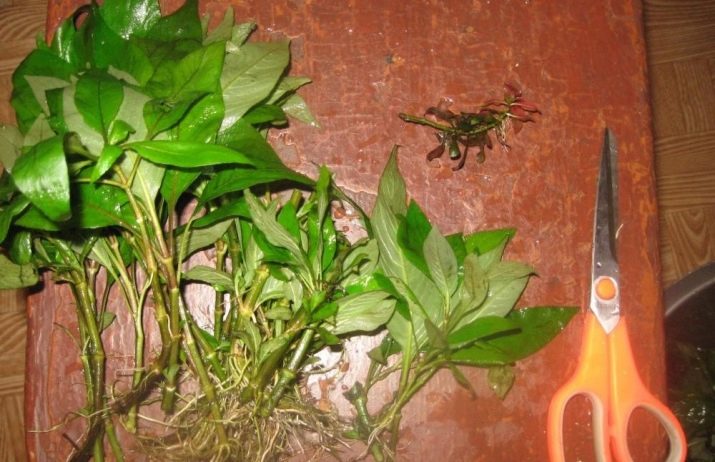
As soon as the process of self-breeding of the plant ends, you can start planting your "pet". If you have been reproducing aquarium lemongrass on your own at home, then after planting it, you should closely monitor its "health" for some time so that in case of any problems your plant does not die.

As soon as you notice changes in the appearance of the plant, this is direct evidence that the habitat of lemongrass is not quite suitable for it, and something needs to be changed.
For more information on the lemongrass aquarium plant, see the video below.








